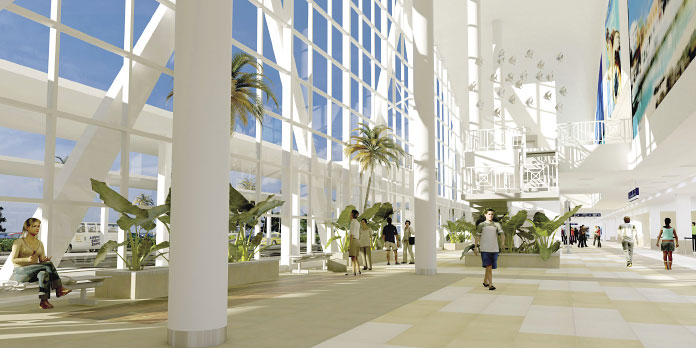
Light floods in from large glass windows as passengers glide comfortably through spacious hallways lined with shops and restaurants. The atrium is tastefully decorated with expansive artwork and dotted with potted palms that give it a low-key island feel.
This is the new Owen Roberts International Airport, or at least an architect’s rendering of how the finished building will look.
The reality, as anyone who has traveled through the facility during peak tourist season in the Cayman Islands, is currently very different.
Lines of travelers, snaking outside the terminal building, have been a common sight at the overcrowded airport, with the departure lounge often packed to capacity on busy weekend travel days.
The Cayman Islands has come a long way as a tourism destination since 1983 when the existing airport buildings were designed with an assumed annual use of 440,000 passengers a year.
The airport has not kept pace with an increase in arrivals. Nearly a million people use the facility every year and the upgrade, which has been on every government’s wish list since the late 90s, is now an imperative.
The immediate plan for Owen Roberts is a CI$55 million renovation, beginning in late 2015, that will expand the airport to nearly three times its current size.
Chalmers Gibbs Associates, the current incarnation of the architectural firm that designed the original airport, will serve as one of the local consultants on the project.
In his Grand Cayman office, the firm’s managing director, William Steward, pours over a thick book of papers – page after page of clean, straight lines.
These are just the plans for the baggage hold room. The blueprints for the entire airport run to several thousand pages. Stacked on top of each other they would reach the ceiling.
It is hard to reconcile these geometrically precise architectural drawings with those Utopian computer generated graphics of how the new building will look.

It is part of Mr. Steward’s job to help transform those two dimensional designs into a working airport that can serve the needs of the country for the next several decades.
Working with lead architects, US firm RS&H, Chalmers Gibbs will provide architectural consultancy, work on the interiors and help manage the project.
Mr. Steward said, “Our role will be in coordinating the realization of this project through its various phases to final completion. There will be significant challenges in the phasing to assist the efficiency of the ongoing work while ensuring the safety and convenience of the public as well as airport operations staff. We are ready for those challenges and looking forward to the start of construction.”
The local design consultancy team also involves AMR Consulting Engineers and JEC Building Consultants.
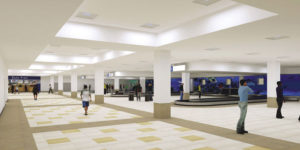
As the project proceeds, competitive bids will be invited to find the construction firms that will build the finished airport.
Even before the architects put pen to paper on the first of those technical drawings, much work had already been done.
Upgrading Cayman’s airport, including the much smaller facilities on sister islands Cayman Brac and Little Cayman, has been an ongoing discussion for over two decades.
A detailed master plan was put together in 2007. But the multi-million dollar project was one of the victims of the world financial crisis. Cayman’s political leaders went back to the drawing board in 2014, commissioning a masterplan for the future of the island’s airports.
With money still tight, hard decisions had to be made. Ideas about lengthening the runway to accommodate long haul flights from Europe were out. Boarding bridges to take passengers from plane to terminal were also dropped.
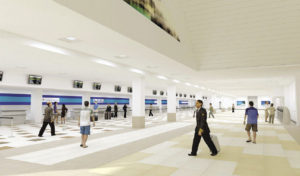
The priority was the terminal buildings.
As Tourism Minister Moses Kirkconnell is fond of saying, the airport is the first and last impression visitors have of Cayman.
Long waits in crammed departure and arrival halls leave poor memories and are bad publicity for the otherwise booming tourism sector, which celebrated record visitor arrivals in 2014.
The masterplan also identified a number of technical and safety priorities, including reinforcing the runway and relocating the aviation fuel system.
With the broad brush priorities established and the design consultants selected, the detailed work could begin.
Meetings with tourism officials, the planning department, health and safety regulators, the Building Control Unit, the Department of Environmental Health and utilities companies followed to hammer out the practical issues.
One of the challenges the designers face is keeping the airport running smoothly while construction takes place. The work will be carefully scheduled to ensure that travel and tourism can continue amid what is expected to be a three-year construction period.
The first phase, a baggage handling and screening facility, started construction in August 2015. Completion of this aspect in early 2016 will enable the decommissioning of existing baggage handling equipment and pave the way for the much-needed expansion of the departure lounge.
Those kind of practical headaches had to be integrated with policy ambitions and aesthetic considerations. The concept designs greatly expand the opportunities for retailers and restaurateurs to take space within the airport, a move that officials hope will improve revenues.
The designers also wanted to add a signature flourish that would make the airport a grand entrance to Grand Cayman, something Mr. Steward feels they have pulled off.
“The challenge for the design team and our chief design architect, Cristina Ghets (of RS &H) was to marry the limitations of budget and schedule constraints with very high community expectations. The design had to be both distinctive yet economical. I feel the current design achieves those disparate goals,” he said.
“Priority has been given to functionality but with the addition of a grand architectural gesture in the arched interior space that we are confident will create a distinctive gateway to and from our islands.”
The combination of practical challenges and alluring aesthetics was an ongoing conundrum for the design team on what is a relatively low budget project.
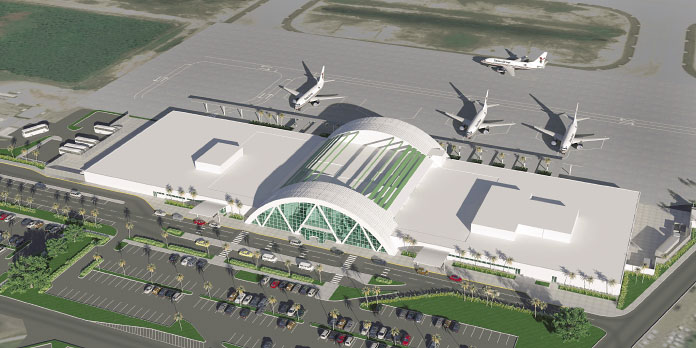
Steep A-frame structures, clad in wood, centered on the land and airside facades of the existing facility were considered by the designers to be a distinctive, even iconic, aspect of the current design and they will be retained for both practical and symbolic reasons.
Other distinctive aspects of the current airport, such as an outdoor waving gallery that allows friends and family to greet arriving passengers as they step off the plane, will have to go for regulatory reasons.
Mr. Steward believes the interior designs will add a local feel that will help immerse users in an experience unique to Cayman.
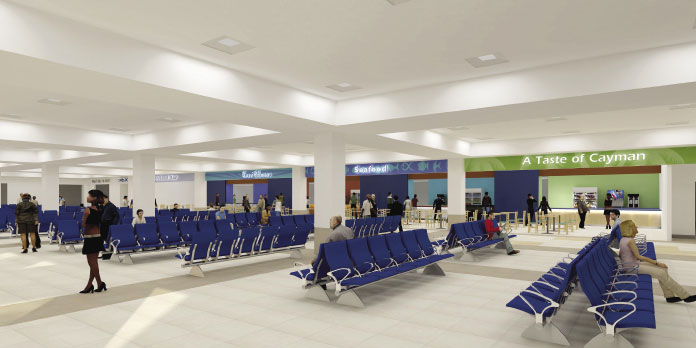
“The interior provides spaces for native art displays, sculptural installations created by local artists, displays inspired by the natural world specific to the Cayman Islands,” he said.
There is a long way to go and turning plans and designs into a beautiful modern airport will be an ongoing challenge for the design team.
But they believe they have come up with a plan that will help create a first and last impression for tourists that meets the blue-chip standards expected of Grand Cayman.



















